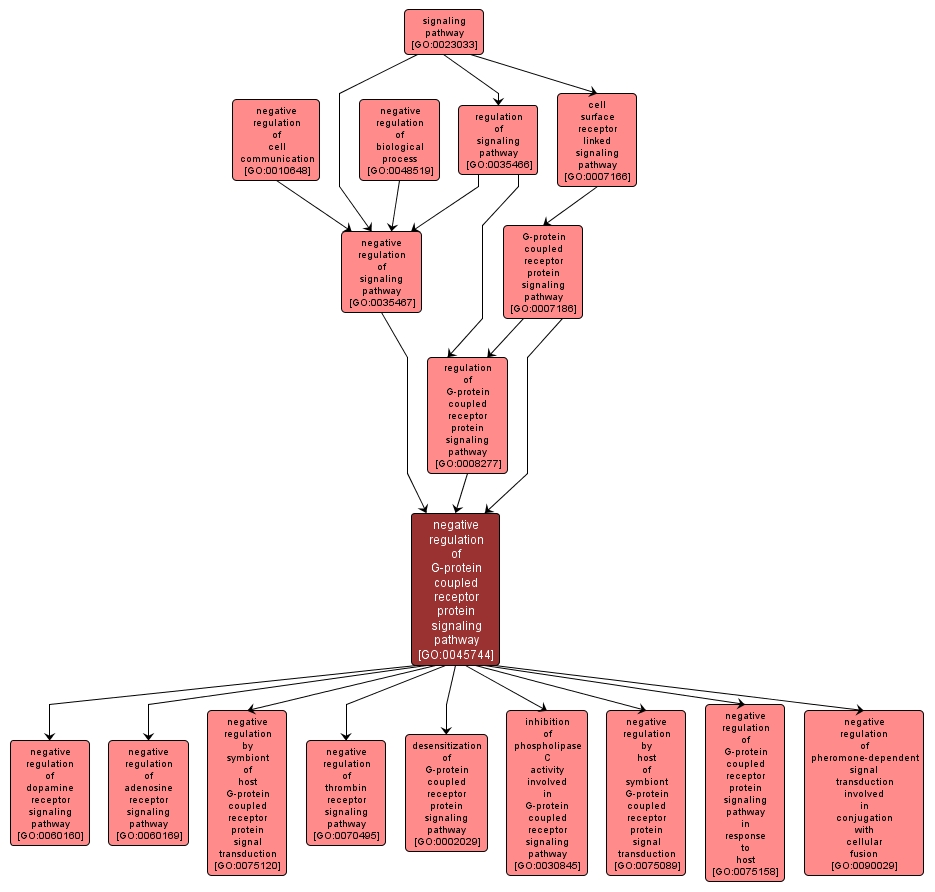GO TERM SUMMARY
|
| Name: |
negative regulation of G-protein coupled receptor protein signaling pathway |
| Acc: |
GO:0045744 |
| Aspect: |
Biological Process |
| Desc: |
Any process that stops, prevents or reduces the frequency, rate or extent of G-protein coupled receptor protein signaling pathway activity. |
Synonyms:
- negative regulation of G protein coupled receptor protein signalling pathway
- negative regulation of G-protein-coupled receptor protein signaling pathway
- down-regulation of G-protein coupled receptor protein signaling pathway
- negative regulation of G-protein coupled receptor protein signalling pathway
- negative regulation of G-protein-coupled receptor protein signalling pathway
- inhibition of G-protein coupled receptor protein signaling pathway
- negative regulation of GPCR protein signalling pathway
- negative regulation of GPCR protein signaling pathway
- downregulation of G-protein coupled receptor protein signaling pathway
- negative regulation of G protein coupled receptor protein signaling pathway
- down regulation of G-protein coupled receptor protein signaling pathway
|
|

|
INTERACTIVE GO GRAPH
|














